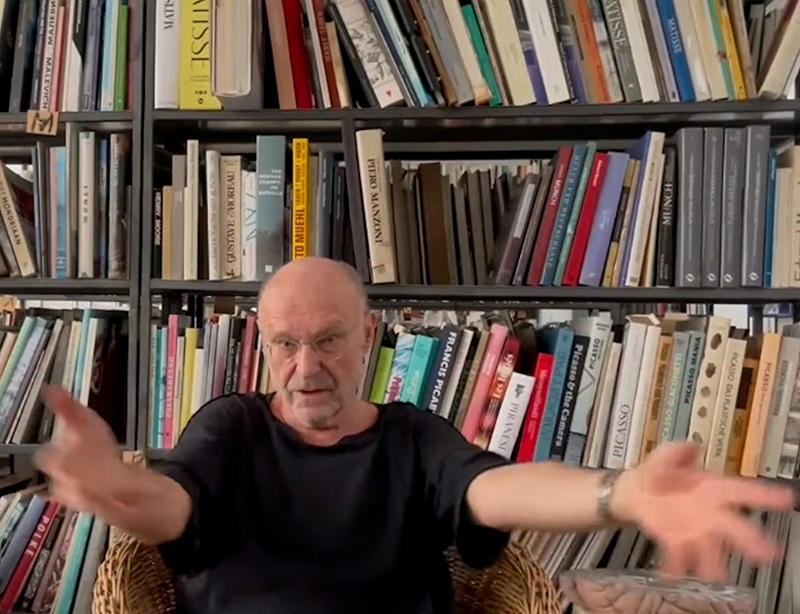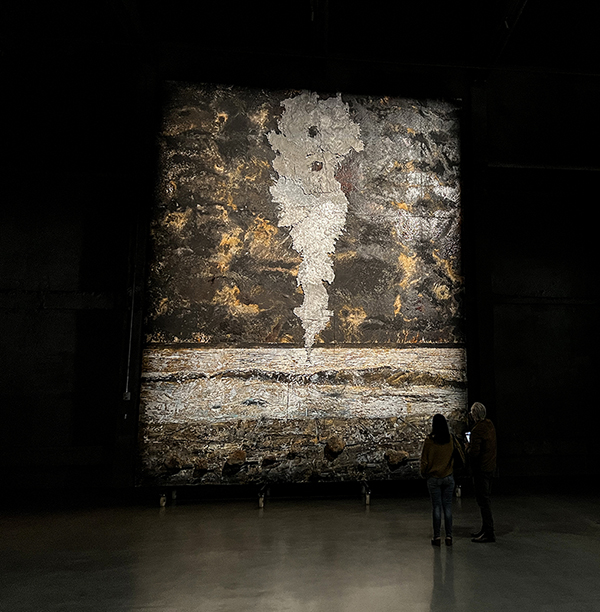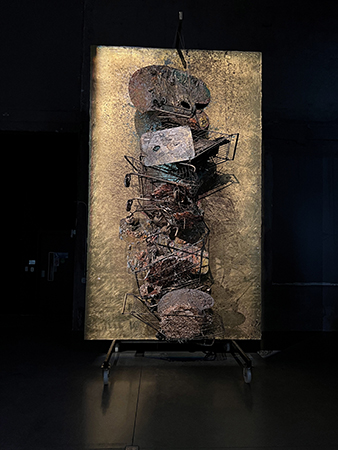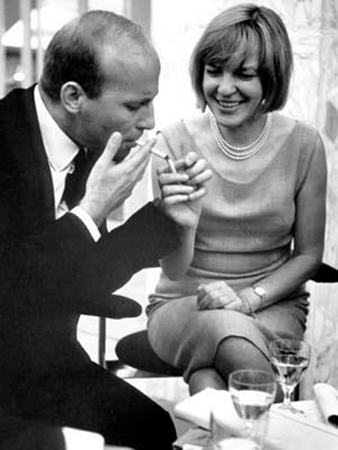The Anselm Kiefer exhibition “Exodus” at the Gagosian Gallery in L.A., staged at the Marciano Foundation, exemplifies his breadth and originality. The documentary included here illustrates his work, thinking, and personality better than anything I may put in words.

Words matter. They inspire Kiefer’s output. He finds sources in the Old and New Testaments, in Kabbalah’s mysticism, and in the poetry of Paul Celan and Ingeborg Bachmann. But it is not only words. Landscapes of nature, ruins of bombarded cities, and cultural behaviors also converged into the reinterpretations and reassembling of his architect’s mind.
The link between the terrestrial and the celestial carries through in the ladder between the two spheres in En Sof (2020–22) and the emanation of Wolkensäule Column of Clouds) (2009–21).
A suspended sculpture of a modern naval vessel stands in for the destruction of the pharaoh’s military in the narrative of the parting of the Red Sea found in Exodus, as recounted in the title of And with the blast of thy nostrils the waters were gathered together, the floods stood upright as a heap (2020).
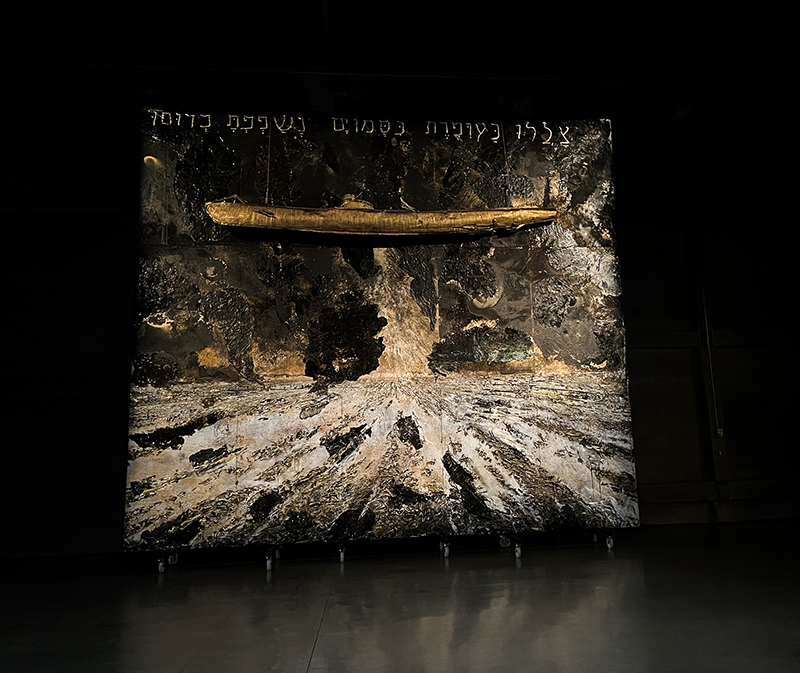
Kiefer’s use of straw in his work represents energy. He claims this is due to straw’s physical qualities, including the color gold and its release of energy and heat when burned. The resulting ash makes way for new creation, thus echoing the motifs of transformation and the cycle of life.
Kiefer’s oeuvre encompasses paintings, installations, books, drawings, watercolors, collages, and altered photographs. The physical elements of his practice—from lead, concrete, and glass to textiles, tree roots, and burned books—are as symbolically resonant of complex events of history, memory, and the ancestral epics of life, death, and the cosmos. Full of symbolic thresholds between peoples, places, and times, the paintings are metaphysical allegories that meditate on loss and deliverance, dispossession, and homecoming.
Kiefer was born in 1945, a few months after the end of World War II in Donaueschingen, Germany. Following studies at different schools, he received his art degree in 1969. He lived about twenty years in Hombach (midway between Frankfurt and Stuttgart.) In 1991, the artist left Germany to travel around the world—to India, Mexico, Japan, Thailand, Indonesia, Australia, and the United States. In 1992 he settled in Barjac, France (about 50 km from Montpellier and 100 km from Lyon.) From 2008 he lived in Paris, in a large house in the Marais district, with his second wife, the Austrian photographer Renate Graf, and their two children.
Kiefer’s fascination with Paul Celan and Ingeborg Bachmann, whom he considers “the best poets of the second half of the 20th century,” is revealing. The love affair between Ingeborg Bachmann and Paul Celan constitutes one of the most dramatic chapters of literary history after 1945. The respective backgrounds of the lovers who came together in May 1948 in occupied Vienna could not have been more different: she, the philosophy student daughter of an early Austrian Nazi member; he, a stateless German-speaking Jew from Czernowitz who had lost his parents in a concentration camp and was himself a survivor of a Romanian labour camp. They both wrote in high German, frequently hard to understand even when knowing the language.
Representing Germany at the Venice Biennale of 1980, the show provoked much controversy and launched him to world fame. Two major recent exhibitions were a colossal installation at the at Palazzo Ducale in Venice (2022) and at Paris’ Grand Palais (2021.)

